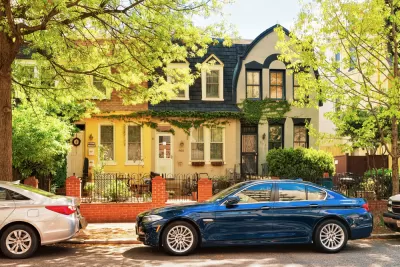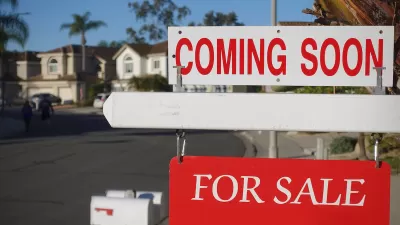New research by Jenny Schuetz shows that already-expensive neighborhoods in D.C., zoned for low-density single-family homes, are not doing their part in adding new supply to meet rising demand.

Jenny Schuetz shares new research that finds that where housing prices are increasing fastest in D.C., zoning has prevented any new housing from being added.
According to Schuetz's premise for the research, the facts on the ground don't live up to the promises of politicians, like D.C. Mayor Muriel Bowser, who has promised to build new homes in "every ward and every neighborhood" to prevent displacement in lower-income and minority communities.
A fundamental principle of economics is that when the price of goods or services increases, producers will increase supply. Therefore, when the price of housing in certain cities or neighborhoods increases, developers should build more homes. And indeed, District neighborhoods that saw higher growth in housing values did see more new housing construction—but only where restrictive zoning didn’t impede growth.
To illustrate the point, Schuetz shares graphs an also digs into specific census tracts. The larger conclusion Schuetz builds from these findings is that restrictive zoning exacerbates affordability by limiting new construction and incentivizing upgrades and upsizing, which leads in turn to higher costs.
FULL STORY: Restrictive zoning is impeding DC’s goal to build more housing

Planetizen Federal Action Tracker
A weekly monitor of how Trump’s orders and actions are impacting planners and planning in America.

San Francisco's School District Spent $105M To Build Affordable Housing for Teachers — And That's Just the Beginning
SFUSD joins a growing list of school districts using their land holdings to address housing affordability challenges faced by their own employees.

The Tiny, Adorable $7,000 Car Turning Japan Onto EVs
The single seat Mibot charges from a regular plug as quickly as an iPad, and is about half the price of an average EV.

With Protected Lanes, 460% More People Commute by Bike
For those needing more ammo, more data proving what we already knew is here.

In More Metros Than You’d Think, Suburbs are Now More Expensive Than the City
If you're moving to the burbs to save on square footage, data shows you should think again.

The States Losing Rural Delivery Rooms at an Alarming Pace
In some states, as few as 9% of rural hospitals still deliver babies. As a result, rising pre-term births, no adequate pre-term care and "harrowing" close calls are a growing reality.
Urban Design for Planners 1: Software Tools
This six-course series explores essential urban design concepts using open source software and equips planners with the tools they need to participate fully in the urban design process.
Planning for Universal Design
Learn the tools for implementing Universal Design in planning regulations.
Smith Gee Studio
City of Charlotte
City of Camden Redevelopment Agency
City of Astoria
Transportation Research & Education Center (TREC) at Portland State University
US High Speed Rail Association
City of Camden Redevelopment Agency
Municipality of Princeton (NJ)




























